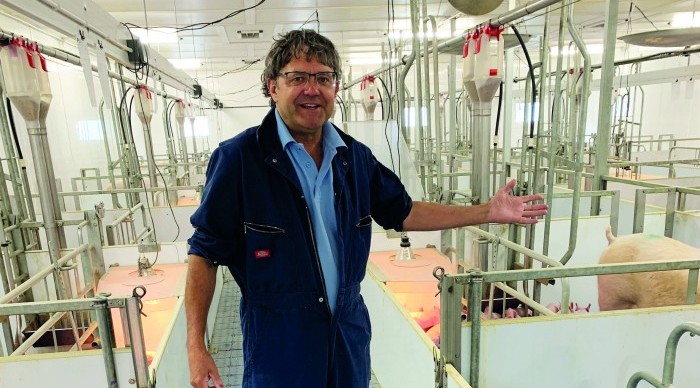Higher welfare freedom-style farrowing pens with temporary crating work well and actually improve performance in many cases, Tim Miller, environment specialist for ARM Buildings, told the Pigs Tomorrow conference.
But converting to such systems comes at enormous expense, he said. “This can amount to £6,000 per sow place and could cost the industry as a whole over £200 million. The government needs to be aware
of this when voting in new legislation, which is likely to be aligned with that in Europe,” he said.
Mr Miller was part of an informative and constructive discussion on the future of farrowing systems, alongside, NPA chief executive Zoe Davies, Lincolnshire producer Gareth Virgo, vet Duncan Berkshire and Mark Haighton, from Pilgrim’s UK.
Mr Miller told the Leicestershire event the new legislation was ‘a question of when, not if’.
As farmers try to ‘future-proof’ their units, hundreds of such pens have already been installed on British farms and Mr Miller has been involved in many of these.
“Keeping the sows confined for the first three or four days definitely saves piglets’ lives and many farmers have reported lower mortality, better weaning weights and fitter, more mobile sows,” he said. “One farm achieved a remarkable 6-8 percent mortality from 14.7 piglets born alive,” he reported. “Stock people like the system as it is safe and easy to manage.”
He urged Government legislators should not underestimate the difficulties, however, including the extra costs incurred, which are due mainly to the additional 45-50% of space needed. When converting existing houses fewer sows can be accommodated, so new buildings may be required even if herds are not expanded.
“Most farmers I deal with are in favour of the higher-welfare pens, but there should be proper recognition of the eye-watering costs,” he said.
Mr Virgo reiterated his comments, highlighting some of the gains seen on his farm with temporary crating systems, although he stressed it was very much a trial and error process, with variable results seen, particularly in the early days.
Dr Davies said the industry had an opportunity to work together to form a blueprint for new systems that improve pig welfare while being workable for the producer and staff. She set out the industry’s key asks, including having temporary crating as an option, a sufficient transition period to give producers time to adapt and substantial support from producers to cover the massive costs.
The panel also agreed that the supply should have a major role to play in supporting producers who do adapt.




